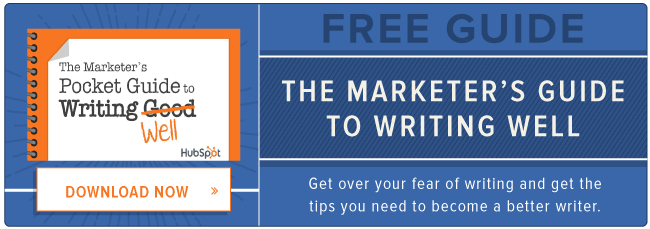
In Chicago, there’s a famous restaurant called Alinea. It’s one of only a handful of restaurants in America that have earned the coveted 3-star Michelin rating, making it one of the best restaurants in the world. But if you ask people who’ve dined there what makes it unique, most will tell you that, somehow, it’s not just the food.
Alinea is an experience. The food, artistic and delicious as it is, wouldn’t garner its full effect if each course (there are about 20 in all) didn’t arrive just in time, perfectly ordered, with each dish complementing the one before it and simultaneously enhancing the one scheduled to arrive next. There’s a natural flow to the meal — a rhythm. Each course serves a purpose, like the individual instruments of an orchestra.
The end result is something enticing, captivating, and memorable — and fun. Really fun. Most importantly, the end result sells people. It compels them to write glowing Yelp reviews. It makes Alinea the topic of conversation. The end result drives people back again and again.
As a marketer, if you want to sell people like a Michelin 3-star restaurant, you have to execute like one. In other words, you have to 1) produce something remarkable and 2) present it correctly, logically.
If you don’t know how to do that, here’s a proven copywriting formula that will guide you …
Bob Stone’s Gem: The 7-Step Formula for Writing Copy That Sells
Bob Stone was a giant figure in the advertising world. His colleagues called him “Mr. Direct Marketing” because he wrote countless successful direct mail pieces, selling everything from surgical dressings to business club memberships.
How did he do it? He had a trick: an adaptable formula made up of seven simple, logical steps he used to hook readers and keep their interest until the last line (at which point many readers did what he asked them to).
Stone’s formula — referred to by marketers as “Bob Stone’s Gem” — was originally used to write sales letters and other direct response advertisements. But in the decades since its invention, it’s been proven to work in virtually any type of promotion, from blog posts to landing pages to sales emails. Try it yourself and watch your response rates rise.
But first, let’s break down each step. You’ll notice that I’ve provided an example sentence (or two or three) under each to show how a copywriter might use Bob Stone’s Gem to create a blurb of copy (which, in this instance, is selling that beaut of a restaurant: Alinea).
1) Begin with your strongest benefit.
In the advertising world, features tell and benefits sell. That’s what makes Bob Stone’s Gem so compelling: it forces marketers to focus on and, therefore, highlight the benefits of their product, service, cause, program — what have you. Of course, features should also be present in the promotion you create but, ultimately, they’re not closers. Only benefits are.
That’s why you have to sculpt your copy around a target persona, highlighting the benefits you know to be most important to her.
In this example, I’ll be writing to Foodie Francis, a married, middle-aged lawyer with two adult children. She loves cooking and is particularly fascinated by molecular gastronomy.
Let’s get started:
Dine at Alinea, and join the I’ve-Eaten-the-Best-Food-in-the-World club.”
2) Expand on the most important benefit.
Make your main benefit difficult to ignore by describing the actual positive impact it can make on your target persona’s life. Change your reader’s perspective. Plant a seed.
For example:
A club that will open your culinary head, forever changing the way you look at food and, perhaps, even the way you understand ingredients.”
3) Explain exactly (and in detail) what the prospect will get.
You’ve planted the seed, now water it. This is where you can drop some features. You can do so by painting a picture, which will give your reader something to visualize and gestate. Just don’t over-do it. Leave room for your reader’s imagination. After all, it exists for a reason …
For example:
At Alinea, dine on tempura-fried pheasant breast, while experiencing the delights of a Midwestern fall — even if it’s January. At Alinea, eat an apple masquerading as a helium balloon.”
4) Back up your statement(s) with proof.
By this point, your reader has given you her attention, time, and effort. But she’s not a sucker, you know. She’s a leery, 21st century consumer. And if she’s to be sold, she is going to need some proof.
This is your chance to flash some facts, statistics, testimonials, awards — anything that’ll give credibility to your claims.
For example:
At Alinea, experience the weight of 3 Michelin stars: the bites, the service, the art of it all.”
5) Tell them what they’ll lose if they don’t act.
Bob Stone included this step because he knew that people are far more driven to avoid pain than they are to acquire pleasure. As a species, we’re constantly striving to prevent suffering and avoid discomfort. That’s why it’s important to incorporate some negativity into your copy.
For example:
But if you choose not to make a reservation, rest assured you’ll go on living, laughing, and loving like you always have. Nothing will change. And wouldn’t that be unfortunate?”
6) Sum up the most important benefits.
You just took your reader to the darkside, now bring them into the light again. Recap all those terrific benefits that captivated your reader in the first place, reminding her why she should pull the trigger.
This is your last opportunity to sum up the value your product or service will bring to the reader’s life. This is your chance to push the reader over the threshold, so make it personal and emotional for your target audience.
For example:
Because beautiful and delicious and exciting as the Alinea experience is, it’s nothing compared to what could be. It’s nothing when pitted against the future — your future — after your mind is awakened to the potential of ingredients and the possibilities of food.”
7) Present your call-to-action.
If you don’t ask your reader to take a specific action at the end of your copy — if you don’t tell her what to do next — you might as well have never written it in the first place. I don’t care how compelling your words have been, if there isn’t a clear next-step, your copy is almost certainly going to fail.
So keep your call-to-action simple and direct. Don’t force your reader to think.
For example:
Be our guest. Reserve your table on our website, www.AlineaRestaurant.com, today.”
The Finished Product
When stitched together, Alinea’s promotional blurb is short and sweet. Depending on the circumstances, it could be expanded or even shortened. But for the purposes of this article, I think it reads just right:
Dine at Alinea, and join the I’ve-Eaten-the-Best-Food-in-the-World club.
A club that will open your culinary head, forever changing the way you look at food and, perhaps, even the way you understand ingredients. At Alinea, dine on tempura-fried pheasant breast, while experiencing the delights of a Midwestern fall — even if it’s January. At Alinea, eat an apple masquerading as a helium balloon. At Alinea, experience the weight of 3 Michelin stars: the bites, the service, the art of it all.
But if you choose not to make a reservation, rest assured you’ll go on living, laughing, and loving like you always have. Nothing will change. And wouldn’t that be unfortunate?
Because beautiful and delicious and exciting as the Alinea experience is, it’s nothing compared to what could be. It’s nothing when pitted against the future — your future — after your mind is awakened to the potential of ingredients and the possibilities of food.
Be our guest. Reserve your table on our website, www.AlineaRestaurant.com, today.”
Is this copy going to sell everybody who reads it? Of course not. But then again, it wasn’t designed for everyone. It was designed for Foodie Francis, remember?
So, will it sell her? Perhaps. Nothing’s a sure thing. But thanks to Bob Stone’s Gem, I like my chances.
What do you think of this formula? Will you try it? Share you thoughts below.






